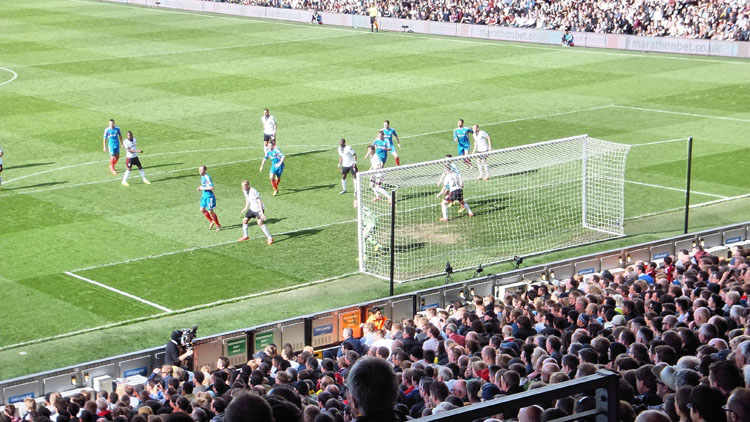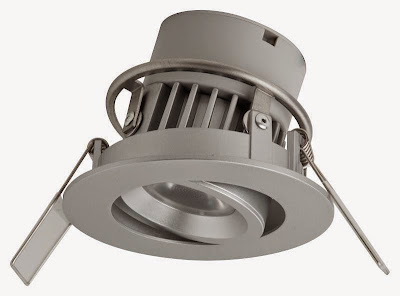
“Compulsory energy audits mean companies have no choice but to acknowledge their energy consumption”
sales@novelenergylighting.com
28
Comments off · Posted by admin in LED, LED Floodlights, Philips LED

LUX reports: Premier League football club Hull City is planning to upgrade its pitch lighting to LED floodlights this summer. The move is aimed at meeting the needs of modern high-definition TV broadcasting as well as opening up the KC Stadium to a wider range of events.
It has opted for Philips’ ArenaVision LED floodlighting system, which has been specially developed to meet the TV broadcast requirements specified by the Premier League. It can also provide the entertaining lighting effects needed to build atmosphere and excitement before and after matches.
The lighting will be installed at the KC Stadium during this summer’s break in time for the start of the next season.
LEDs are increasingly taking over from metal halide as the floodlighting source of choice. LED technology allows sports stadiums to use lighting in a more creative way, making them attractive venues for events such as concerts. Control systems allow individual floodlights to be switched on or off or dimmed. Systems such as Philips’ ArenaVision makes it possible to create pre-set light scenes for specific applications, such as dimmed energy-saving levels for cleaning and maintenance.
John North, managing director of the Stadium Management Company, said: ‘The new state-of-the-art, energy-efficient LED pitch lighting system for the KC Stadium delivers the ability to instantly change from one light setting from another. This is not just a game changer for spectators but also for the future of the modern multi-purpose stadium, a key feature of the operational strategy for our sporting venues.’
Hull will also benefit from the maintenance savings accruing from the long life of LEDs. Typically, metal halide floodlighting lamps should be replaced every three seasons to maintain the lighting levels required. The Philips LED system is expected to last more than 10 seasons.
Andy Gowen, director of public lighting at Philips Lighting UK, commented: ‘The main priority for professional sports venues has always been to ensure the correct light levels on the pitch, but with the arrival of the digital age, there is a great deal more on offer.
‘Our ArenaVision LED floodlighting bridges the worlds of entertainment lighting and static, high quality pitch lighting to deliver a memorable experience for visitors, whether they are coming to watch Hull in action or to hear their favourite bands perform.’
energy efficient lighting · led flood lights · led floodlights · led lighting · led stadium · Novel Energy Lighting · philips led · stadium lighting
26
Comments off · Posted by admin in LED, LED downlights, LED GU10, LED Spots
Siena is the latest range of high performance integrated LED downlighters from energy saving lighting experts Megaman UK.

led downlight · led downlighter · led lighting · led spot · megaman downlight · Megaman LED · megaman siena · Novel Energy Lighting
OSRAM to illuminate as the official lighting partner the Eurovision Song Contest 2015, this year to be held in Vienna:
Spectacular stage and light shows are a traditional fixture of this major media event. As the Official Lighting Partner, OSRAM is responsible for the majority of the lighting this year.With an expected audience of 200 million, the Eurovision Song Contest (ESC) will this year be once again a great TV entertainment show. Last year’s winner – pop artist and drag queen Conchita Wurst – came from Austria, so the 60th ESC will be taking place from the 18th to 23th May in Austria.
In particular, this includes show lighting from OSRAM subsidiary Clay Paky, which will make the Eurovision Song Contest and its stars a glorious feast for the eyes.
The products from the Italian event lighting specialist, which has an outstanding reputation in the international entertainment industry and has provided lighting for shows by such legends as Kylie Minogue and Robbie Williams, will be in use in the Vienna Stadthalle not only in the final but also in the semi-finals.
“We transform the largest entertainment spectacle in the world into the largest lighting technology event with our light systems,” commented Hans-Joachim Schwabe, CEO of OSRAM Specialty Lighting.
“We want to turn the show into a really unforgettable event for the audience,” he said.
For many years Clay Paky products have been used for the ESC and continue to set new standards in event lighting. This applies also this year for the ESC, which has been designed as a green event where energy efficient products are to be used.
OSRAM is also showcasing its lighting expertise away from the venue in Vienna. OSRAM will be presenting its Lightify LED lighting system in the ‘Eurovision Village’ at the Rathausplatz in the centre of the city.
Up to 20,000 visitors are expected here in the evenings to view the contest on huge screens. On a smartphone app they can try out the lighting control option in a unique way by using the app to ‘vote’ and show support for each of the contestants during the final shows on a scale from one to twelve.
The results of the voting will be translated into a colour and the Rathausplatz will then be bathed in light of this colour. Red light signifies maximum points, and blue toward the other end of the spectrum indicates one point.
Commented Timon Rupp, Head of the Lightify Innoventure at OSRAM: “The ESC is the ideal platform for Lightify. Young people can use light to boost the excitement of a major event and add another emotional layer.
“In this way, OSRAM and Lightify provide impressive confirmation of the company’s powers of innovation,” he said.
Visit novelenergylighting.com to view our range of Osram LED lamps and fittings, or email us for project quotes: sales@novelenergylighting.com
effects lighting · led eurovision · led lighting · led stage lighting · lightify · Novel Energy Lighting · osram led · osram lighting
15
Comments off · Posted by admin in LED
Lux reports: An LED lighting system at Rainhill train station in Lancashire has reduced energy use by more than half and attracted positive feedback from employees and customers. The station, one of 464 managed by Northern Rail, is on the line where Robert Stephenson’s pioneering Rocket successfully completed the first locomotive trials in 1829, so a key consideration for the lighting project was the appeal and structural integrity of the historic site.
More recently, the station’s old lighting system had been vandalised and was no longer providing enough illumination in some areas.
‘We wanted to install LED lighting at Rainhill to show that new technology could be fitted in a building of historic interest, running new beside old without detriment to the structure itself,’ said Euan Hilton, utilities, contracts and data manager at the station’s operator, Northern Rail.
The chosen supplier for the new lights, together with a control system using motion sensors, was UK manufacturer Dexeco Solutions, part of the Dextra Group (which was named Manufacturer of the Year at the2014 Lux Awards).
The installation is a rare example of a rail operator embracing lighting controls and reaping the benefits. In many cases the complexity of controls, combined with fears about safety, has held the industry back from making the most of possible energy savings.
Dexeco used a different product in each of the station’s four areas: Impervia LED columns with infrared motion sensors on platform columns; vandal-resistant Eco Impervia LEDs with the same sensors on the canopy above the platform; MOD LEDs in waiting rooms and offices; and motion-sensing Amenity Plus LEDs in the toilets.
Installation costs were kept down by matching the new LED fittings to existing fittings. Integral sensors in those new fittings meant the light could be controlled without having to install bus wiring or building management system (BMS) controls. Lights in toilets will turn off when nobody is there, and fittings can also respond to daylight and turn off if they’re not needed. A local company, Picow, was responsible for the installation.
Northern Rail has reported a 56 per cent drop in Rainhill’s overall energy since it activated the motion sensors, which ensure the station’s lights only operate at full output when passengers or trains are present. With unoccupied areas lit to minimum safety and security levels, the new system also reduces light pollution.
Hilton said: ‘Customers have already remarked how the station looks and feels so much brighter and that the waiting room is more pleasant to sit in. Our people have also noticed a big change and were surprised how something such as lighting could change their working environment for the better.’
Novel Energy Lighting can assist with your project today, by providing lighting designs, and supply of LED lamps, fittings, and sensors. Call us: 0208-540-8287, or email for more information: sales@novelenergylighting.com
energy efficient lighting · led controls · led lighting · lighting controls · Novel Energy Lighting · rail led · railway lighting · transport lighting
13
Comments off · Posted by admin in LED, LED downlights, LED GU10, LED panels, LED Spots, LED Tubes

“Compulsory energy audits mean companies have no choice but to acknowledge their energy consumption”
energy efficiency financing · energy efficient lighting · energy saving · esos · LED lamps · led lighting · led panels · led tubes · Novel Energy Lighting